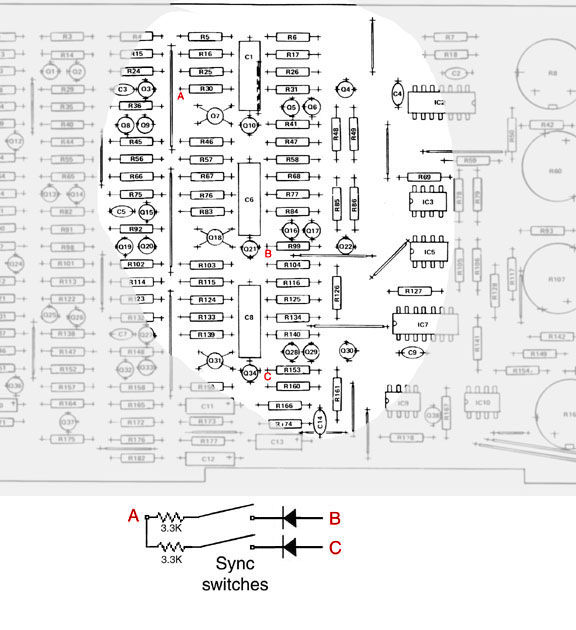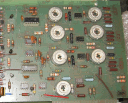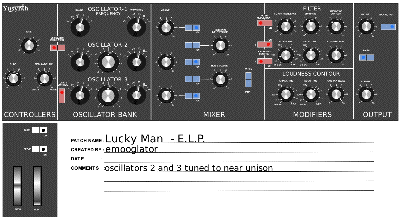GoodiesHere you'll find the Blue prints of
the wood cabinet (Thanks to John Riesenman).
Minimoog schematics (thanks to Jack Palance) |
||||
Patch sheetsI have designed a nice patch template for saving my own patches. You can download the blank patch sheet from this link . Now it's up to
you create nice patches and save them with this
template. . Now it's up to
you create nice patches and save them with this
template. |
||||
| Here
is an example of the patch of an infamous Minimoog
lead... |
||||
Synchro for OSC2 & OSC 3 (after Kevin Lightner)The
mod consist in adding two lever switch (hidden behind
the top wood strip of the front panel) which makes
possible to slave OSC2 & OSC3 to OSC1.
The modification is based on the instructions published by Kevin Lightner on his www.synthfool.com web site. The modification requires two diodes (1N4148), two 3.3K resistors, two lever SPDT switches, a three pins male connectors with leads and a three pins female connector with leads. |
||||
 |
||||
|
|
||||
In order to
facilitate the maintenance of the oscillator board, I
use a three wire connector between the parts to be
fixed on the chassis (resistors, diodes and switches)
and the connections on the oscillator board.
Solder the red wire to point A as
shown, solder the orange wire to point B and the brown
wire to point C.
|
||||
|
|
||||
|
|
 BEFORE MODIFICATION Location of the tempco resistors (big black resistors) |
 Connexion des résistances tempco sur et sous les réseaux de transistor |
 Detail of the fixation of R19 & R70 beneath and onto IC2 |








